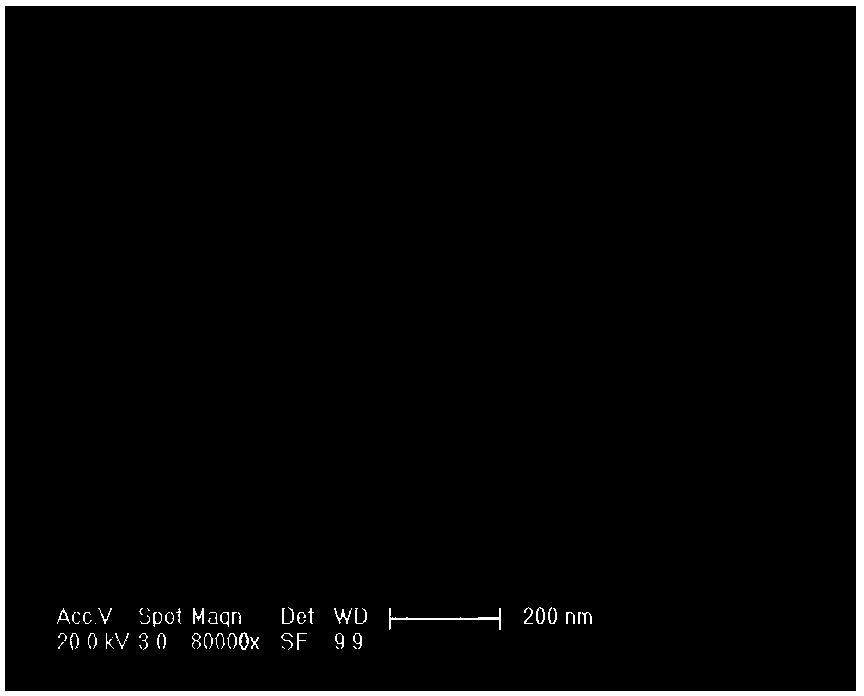Preparation method of composite calcium carbonate
A technology for compounding calcium carbonate and calcium hydroxide, which is applied in chemical instruments and methods, dyeing polymer organic compound treatment, fibrous fillers, etc. It can solve problems such as easy peeling, low coating rate, and difference in titanium dioxide coating rate. , to achieve the effect of improving hiding power, simple production process, and high UV absorption intensity
- Summary
- Abstract
- Description
- Claims
- Application Information
AI Technical Summary
Problems solved by technology
Method used
Image
Examples
Embodiment 1
[0017] At 40°C and a stirring speed of 800 rpm, add 7.4% of calcium hydroxide mass rutile titanium dioxide and 0.074% polyethylene glycol or polyethylene glycol to the calcium hydroxide slurry with a mass fraction of 10%. Alcohol ester (molecular weight 1000), mechanically stirred for 30 minutes, and then at a rate of 120 liters / min, a mixed gas of carbon dioxide and nitrogen with a volume ratio of 1:2 was passed through for carbonization reaction. When the pH value of the solution was 7, the reaction was stopped. A white water slurry was obtained; the white water slurry was centrifugally dehydrated and dried at 120° C. for 4 hours.
[0018] The whiteness value of the composite calcium carbonate is 96.3, the yield rate is 97%, and the coating rate of calcium carbonate reaches 94%. When the composite calcium carbonate is observed with a scanning electron microscope, rutile-type titanium dioxide is coated on the surface of the calcium carbonate, and no separate titanium dioxide ...
Embodiment 2
[0020] Under the conditions of 50°C and a stirring speed of 800 rpm, add 11.1% rutile titanium dioxide and 0.296% polyethylene glycol or polyethylene glycol to the calcium hydroxide slurry with a mass fraction of 10%. Alcohol ester (molecular weight 2000), mechanically stirred for 40 minutes, and then at a rate of 90 liters / min, a mixed gas of carbon dioxide and nitrogen with a volume ratio of 1:2 was passed through for carbonation reaction. When the pH value of the reaction solution was 7, stop react to obtain a white water slurry; the white water slurry is subjected to centrifugal dehydration, and then dried at 120° C. for 4 hours.
[0021] The whiteness value of the composite calcium carbonate is 97.2, the yield rate is 98%, and the coating rate of calcium carbonate is 96%. When the composite calcium carbonate is observed with a scanning electron microscope, rutile-type titanium dioxide is coated on the surface of the calcium carbonate, and no separate titanium dioxide exis...
Embodiment 3
[0023] Under the conditions of 50°C and a stirring speed of 900 rpm, add 14.8% of calcium hydroxide mass rutile titanium dioxide and 0.518% polyethylene glycol or polyethylene glycol to the calcium hydroxide slurry with a mass fraction of 15%. Alcohol esters (molecular weight 6000), mechanically stirred for 50 minutes, and then at a rate of 80 liters / minute, a mixture of carbon dioxide and nitrogen with a volume of 1:2 was passed through to carry out carbonation reaction. When the pH value of the reaction solution was 7, stop react to obtain a white water slurry; the white slurry is subjected to centrifugal dehydration, and then dried at 120° C. for 4 hours.
[0024] The whiteness value of the composite calcium carbonate is 96.8, the yield rate is 97%, and the coating rate of calcium carbonate is 94%. When the composite calcium carbonate is observed with a scanning electron microscope, rutile-type titanium dioxide is coated on the surface of the calcium carbonate, and no separ...
PUM
 Login to View More
Login to View More Abstract
Description
Claims
Application Information
 Login to View More
Login to View More - R&D Engineer
- R&D Manager
- IP Professional
- Industry Leading Data Capabilities
- Powerful AI technology
- Patent DNA Extraction
Browse by: Latest US Patents, China's latest patents, Technical Efficacy Thesaurus, Application Domain, Technology Topic, Popular Technical Reports.
© 2024 PatSnap. All rights reserved.Legal|Privacy policy|Modern Slavery Act Transparency Statement|Sitemap|About US| Contact US: help@patsnap.com









